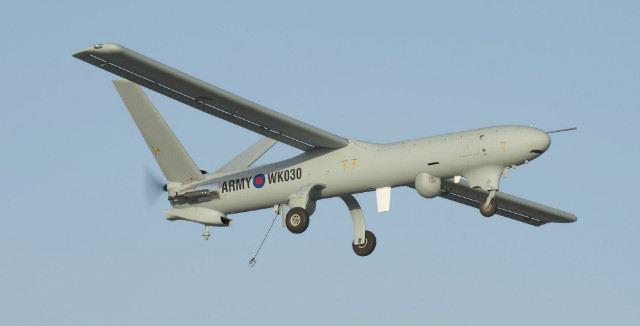Thales and WB Electronics have signed an agreement to build a Polish tactical unmanned air vehicle named Gryf (Grifon), based on the former’s experience with the British Army’s Watchkeeper 450, and on the technology used on the UAV.
One of the key aspects of the Polish military’s modernisation will be its acquisition of unmanned air systems. After three years of technical dialogue, the Polish Armed Forces Inspectorate took the decision to build a mid-range tactical UAS with the involvement of Polish industry.
Warsaw wants to acquire 12 Gryf systems, each with four aircraft and a ground control station. The system will be used for division-level imagery intelligence, will be armed with rockets and enter service from 2017. It also wants to purchase four Zefir (Zephyr)-class systems comprising three aircraft and a GCS each for operational-level use, to be acquired via a government-to-government deal with a foreign contractor. Deliveries would commence in 2019, and the aircraft will be armed with missiles and rockets.
Signed in the Polish capital on 8 July, the new co-operation agreement between Thales and WB Electronics foresees the construction of the Gryf in Polish factories, with critical technologies such as datalinks, mission computers, software and some electro-optical sensors to be developed by Polish engineers.

Crown Copyright
Victor Chavez, chief executive of Thales UK, says the memorandum of understanding will “foster closer ties and working partnerships in support of Poland’s investment in unmanned aircraft systems and related technologies”. He adds: “We are ready to work with Polish industry to guarantee the full sovereignty of Watchkeeper to Poland.”
WB Electronics vice-president Adam Bartosiewicz notes: “On the basis of solutions that we find in the Watchkeeper, we can, using Polish forces, in Polish enterprises and using critical technologies developed by Polish engineers, build the Gryf-class unmanned aircraft, which we will be able to fully control and maybe export to other countries in the future.”
Source: FlightGlobal.com



















